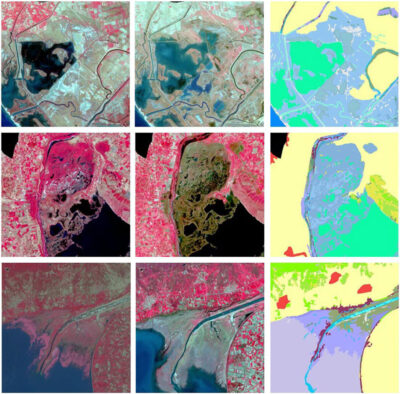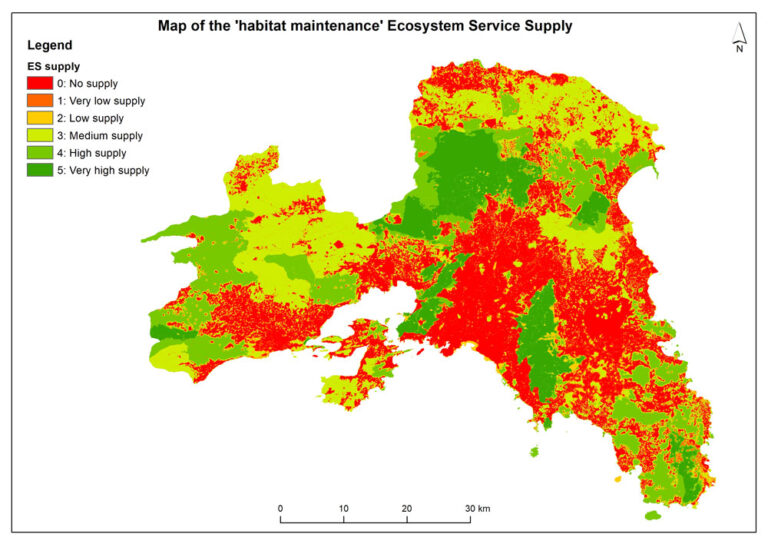Satellite based wetland observation service (SWOS)
Project Summary
The objective of the HORIZON2020 project SWOS was to develop a monitoring and information service focusing on wetland ecosystems. SWOS took full advantage of the Sentinel imagery and integrated results from the ESA GlobWetland projects. Status maps and indicators, as well as near real-time observations were delivered to enable the assessment of biodiversity and to monitor dynamic changes in high temporal and spatial resolution. A Service Portal was developed to allow the integration and web-based analysis of mapping products and in-situ measurements and to provide a unique entry point to locate, access and connect existing information and databases. SWOS contributed to the establishment of a Global Wetland Observing System, as requested by Ramsar to facilitate local and EU monitoring tasks and input into international reporting obligations. The direct involvement of users working at different scales and the support of key user organizations ensured the usability and acceptance of the service, the harmonization with related activities and a long-term impact.
Partnership of SWOS:
Coordinator: JENA-OPTRONIK GMBH.
Partners: Terrasphere Imaging & Gis BV, Remote Sensing Solutions Gmbh, Brockmann Geomatics Sweden AB, Friedrich-Schiller-Universitat Jena, Universidad De Malaga, Rheinische Friedrich-Wilhelms-Universitat Bonn, The Goulandris Natural History Museum-Greek Biotope/Wetland Centre, Fondation Tour Du Valat, Unite Technique Du Semide Geie, Stichting Wetlands International, Uicn, Bureau De Representation Aupres De L’union Europeenne Aisbl.
Project duration: 2015-2018
Funding: EU HORIZON2020 Programme
The Role of EKBY
EKBY developed a SWOS national service case for the mapping and assessment of the 10 Greek Ramsar sites and their catchment areas. The results provide a knowledge base for the national and regional authorities of the Ramsar sites, National Parks, water districts and others to identify areas for conservation and restoration.
EKBY also developed a SWOS case to map and assess the “habitat maintenance” Ecosystem Service (ES) by calculating and combining a series of indicators with spatial modelling techniques, for the territory of Attica Region of Greece. It can assist policy-makers in prioritisation of conservation and restoration targets, in line with the EU biodiversity strategy.
Moreover, EKBY leaded the development of nomenclature standards and crosswalks that supported the harmonization amongst different land cover products, of a single site or various sites distributed along a nation or region. Three standard nomenclatures; the CORINE Land Cover, the MAES typology for ecosystems and their services, and the Land Cover Classification System of FAO, were combined with the Ramsar typology which was used as the basis for crosswalks between these three nomenclatures.
Finally, EKBY collaborated with the Ministry of Environment and the Management Bodies of Axios and Nestos protected areas in the user community of SWOS.
Results
Scientific Publications:
- Water-related ecosystems’ mapping and assessment based on remote sensing techniques and geospatial analysis: The SWOS national service case of the Greek Ramsar sites and their catchments
- Wetland extent tools for SDG 6.6.1 reporting from the Satellite-based Wetland Observation Service (SWOS)
- Indicators for mapping and assessment of ecosystem condition and of the ecosystem service habitat maintenance in support of the EU Biodiversity Strategy to 2020
- Multitemporal optical and radar metrics for wetland mapping at national level in Albania
- Mapping Wetland Dynamics With SAR-Based Change Detection in the Cloud


